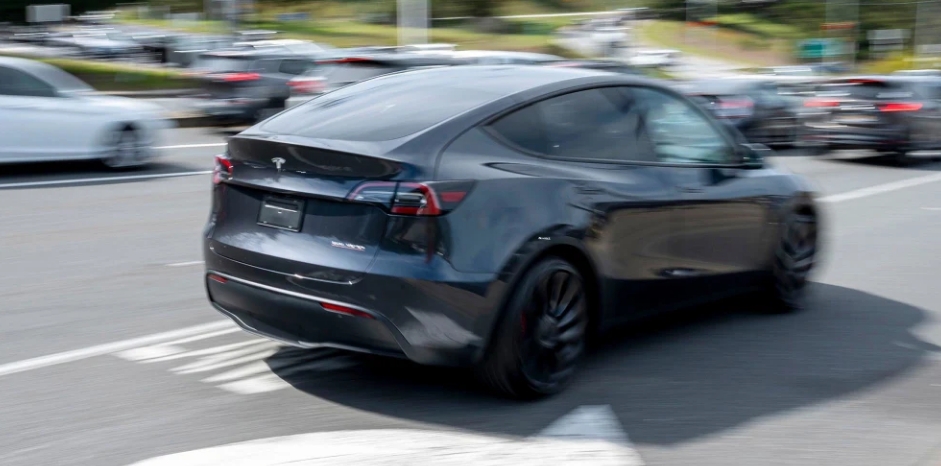Patrick Industries' Q1 Results: Growth Amid Marginal Challenges
Patrick Industries, a leading manufacturer of components for the recreational vehicle (RV), marine, and housing industries, delivered a mixed performance in its Q1 2025 earnings report. While revenue rose 7% year-over-year to $1.0 billion, adjusted EBITDA margins dipped, signaling margin pressures even as top-line growth accelerated. This article examines the drivers of Patrick’s results, strategic priorities, and risks investors should consider.

Revenue Growth Driven by RV and Housing Sectors
Patrick’s revenue increase was fueled by its two largest segments: RV (+14% to $479 million) and Housing (+7% to $295 million). The RV sector’s performance aligns with industry-wide trends, as wholesale unit shipments grew 14%, reflecting strong demand for outdoor recreation. Housing revenue benefited from a 6% rise in manufactured housing (MH) unit shipments and a 4% increase in content per MH unit, showcasing Patrick’s ability to capture higher margins in this segment.
However, Marine (-4%) and Powersports (-2%) revenue declined, reflecting softer demand for powerboats and off-road vehicles. Management attributed the marine sector’s struggles to a 10% drop in powerboat shipments, a trend that could persist if recreational spending remains constrained by inflation and interest rates.
Margin Dynamics: Costs Outpace Revenue Gains
Despite robust top-line growth, Patrick’s adjusted EBITDA margin fell 40 basis points to 11.5%, driven by higher expenses from seasonal aftermarket operations and recent acquisitions. Operating margin expanded by 10 basis points to 6.5%, but this improvement excluded acquisition-related costs, highlighting the trade-off between growth investments and profitability.
The company’s net income rose to $38 million, or $1.11 per diluted share, a 5% increase from $1.06 in Q1 2024. However, adjusted diluted EPS included a dilutive impact of $0.05 from convertible notes and warrants, up from $0.01 in the prior year—a red flag for equity investors.
Strategic Moves and Capital Allocation
Patrick’s acquisitions of Elkhart Composites and Medallion Instrumentation Systems underscore its focus on vertical integration and innovation. These deals expanded its product portfolio into advanced composites and instrumentation systems, which could reduce reliance on external suppliers and improve margins over time. However, they also added $1.4 billion to long-term debt, pushing the net leverage ratio to 2.7x.
CEO Andy Nemeth emphasized strategic investments in automation and aftermarket services, which he believes will “future-proof” Patrick’s operations. Free cash flow, though, declined on a trailing twelve-month basis to $251 million from $391 million, reflecting higher capital expenditures and acquisition costs. Despite this, the company maintained $745 million in liquidity and returned $22 million to shareholders via buybacks and dividends—a sign of financial discipline.
Sector-Specific Risks and Opportunities
The RV sector’s outperformance is a double-edged sword. While strong demand is positive, Patrick’s revenue concentration in RV (48% of total sales) leaves it vulnerable to industry-specific risks like tariffs on Chinese-made components or shifts in consumer preferences. Management noted that 20% of its raw materials face tariffs, which could further compress margins if passed through to prices.
The housing segment’s growth, driven by affordable MH units, positions Patrick to benefit from rising housing demand in underserved markets. However, housing affordability challenges and rising interest rates could dampen momentum.
Conclusion: A Resilient Business Model, but Margins Matter
Patrick Industries’ Q1 results reflect a company balancing growth and margin pressures. The top-line expansion in RV and housing demonstrates the strength of its diversified model, while margin declines highlight execution risks tied to integration costs and supply chain complexity.
Investors should monitor three key metrics:
1. Adjusted EBITDA margin trends – A sustained dip below 11% could signal deeper cost issues.
2. Debt-to-EBITDA ratio – The current 2.7x leverage is manageable but leaves little room for error if revenue growth slows.
3. Free cash flow recovery – A rebound from $251 million to pre-acquisition levels would ease liquidity concerns.
The stock’s recent rise, despite margin pressures, suggests optimism about Patrick’s long-term strategic bets. However, with trailing twelve-month free cash flow down 36% year-over-year, investors must weigh growth investments against near-term profitability. For now, Patrick remains a critical supplier to resilient industries, but its success hinges on converting scale into sustainable margins.
In a sector where innovation and cost control are paramount, Patrick’s focus on automation and vertical integration offers a pathway forward. Yet, the road ahead is littered with macroeconomic risks—ones that could test even the most diversified business models.










